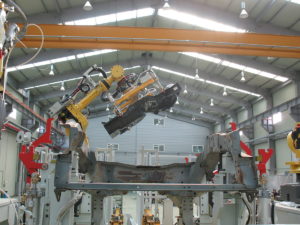The American manufacturing sector has experienced a slow and quiet resurgence in recent years as more and more companies decide to produce goods within the 50 states. 
Advances in technologies and lower wages have made manufacturing at home an attractable consideration. This is particularly true when companies no longer have to deal with delays and expenses associated with bringing in goods produced halfway around the world. As such, financing manufacturing facilities locally has its advantages. Companies are better able to oversee production, analytics, and quality when goods are made nearby. Plus, it is easier for management to make and implement improvements based on real-time data.
A Role Reversal: China Is Now Financing Manufacturing in the U.S.
One new development is that some Chinese companies are now choosing to have their goods manufactured in the U.S. These Chinese companies are estimated to spend more than $10 billion per year on manufacturing financing in the U.S. Some of these factories are for food-related products while others are for luxury goods. China’s middle class tend to believe there is a certain prestige attached to “Made in U.S.A” that doesn’t exist for the “Made in China” moniker. Also, the U.S. seems to remain the preferred location for the production of advanced technology equipment and products (think Boeing airplanes). Such complex facilities require massive amounts of machine shop financing.
The Machine Shop Floor Has Changed
In today’s American factories, technology advancements are a double-edged sword. Robots and highly calibrated machinery have replaced many jobs. This is good for the manufacturer, factoring in costs and other considerations, but is bad for the worker. On the flip side, these highly computerized machines need to be designed and maintained by those with engineering degrees. Manufacturing jobs of the future look to be skilled and specialized indeed. They are a far cry from the bulk low-skill manufacturing roles that used to be common in the U.S. and are now prevalent in China.

 Since 1991 I specialize in Invoice Factoring, PO financing and ABL facilities. I currently work internationally with companies in the US and Canada via our internet marketing division. Specialties: Accounts Receivable Factoring and Payroll Funding for Manufacturing, Oil & Gas, Telecommunications, Wholesale Trade Distribution, Staffing and Transportation. I always enjoy helping companies rise to the next level of success.
Since 1991 I specialize in Invoice Factoring, PO financing and ABL facilities. I currently work internationally with companies in the US and Canada via our internet marketing division. Specialties: Accounts Receivable Factoring and Payroll Funding for Manufacturing, Oil & Gas, Telecommunications, Wholesale Trade Distribution, Staffing and Transportation. I always enjoy helping companies rise to the next level of success.

